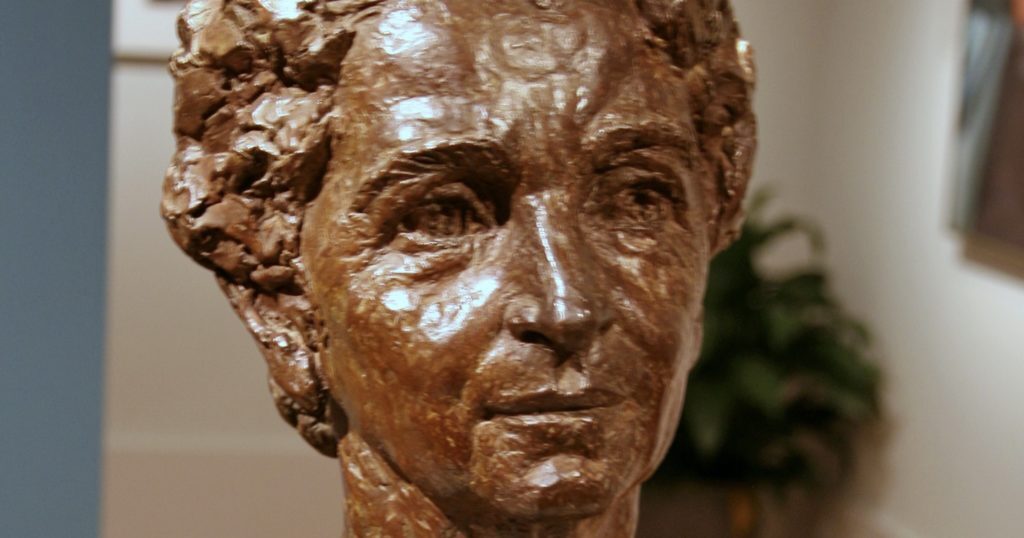I asked earlier today if statues of Charles Darwin will come down at the hands of the marauders, given the vital work his writing has done in justifying scientific racism, eugenics, and genocide. (For more on that, see the documentary Human Zoos, below.) But what about another key and linked figure in history? Planned Parenthood founder Margaret Sanger advocated racist eugenic measures and did not shy from addressing a KKK rally. Yet she's honored by a bust in the National Portrait Gallery's civil rights exhibit, of all places.
Voices of Protest
African American pastors have requested, in an entirely civil plea, that the statue be removed, only to be rebuffed by the Smithsonian. Another statue of Sanger adorns Boston's Old South Meeting House, among other tributes to America's "Voices of Protest."
"Yes, she could certainly be called a Voice of Protest," Discovery Institute Fellow J. Budziszewski has written. "She strongly protested the great many people of the planet whom she considered unfit. She was a racist, a vociferous opponent of charity, and an advocate of controlled human breeding."
Sanger, in her book Woman and the New Race, protested the rising tide of immigrants and people of color in U.S. cities. She worried, "Of the fifty principal cities of the United States there are only fourteen in which fifty percent of the population is of unmixed native white parentage."
She would not have liked the look of New York City today, where there is a Margaret Sanger Square not far from Washington Square Park, a site of recent Black Lives Matter protests.
If She Were Alive Today
Sanger died in 1966. If she were alive today her attitude toward black and other disfavored lives would draw opprobrium. Or so you would hope. Discovery Institute Vice President John West has detailed her views, and the connection to Darwin. From, "The Line Running from Charles Darwin through Margaret Sanger to Planned Parenthood":
In Sanger's view, humanitarianism threatened to swamp America with a tidal wave of the "feeble-minded." As I explain in my book Darwin Day in America, feeblemindedness was an expansive category that included many people who today wouldn't be considered mentally handicapped, including members of races (like blacks) considered by Darwinian biologists of the time to be "lower" on the evolutionary scale. "Feebleminded" persons could read. They could hold jobs. They could appear perfectly normal to everyone else. That's why they were so dangerous according to eugenists. The feeble-minded could appear so ordinary that non-feebleminded persons might marry them and then spread their defective "germplasm" to the next generation.Ben Carson observes, "[Sanger] was not particularly enamored with black people. And one of the reasons that you find most of their [Planned Parenthood] clinics in black neighborhoods is so that you can find a way to control that population."
Sanger branded the feeble-minded a "menace ... to the race" and compared them to "weeds." In her bestselling book The Pivot of Civilization, she wrote that "our eyes should be opened to the terrific cost to the community of this dead weight of human waste."
U.S. congressmen have protested that the bust of Sanger in the Smithsonian is "an affront both to basic human decency and the very meaning of justice." But as the National Portrait Gallery responds, history is complicated:
Bethany Bentley, the National Portrait Gallery's head of communications and public affairs, told NPR that the exhibit doesn't ignore "the less-than-admirable aspects of [Sanger's] career." She adds that the Washington, D.C., gallery is dedicated to history, which she says isn't always pretty.Interesting point about Zachary Taylor and his slaves. To have the world's memory of you preserved in a bust or statue you don't have to "pass a moral test." That was in 2015, five years before the statues of complicated but important figures started tumbling down in today's spasm of anarchy.
"No one has to pass a moral test to be included in a museum," Bentley says. "Everyone has something in their background or beliefs, especially looking back at history. You can look at every president up to Zachary Taylor — they owned slaves."
They're Probably Safe
I would guess that Sanger and Darwin, like Seattle's tribute to Vladimir Lenin, are safe. There are unacknowledged political standards at work. Reflecting on protests of historical statues, J. Budziszewski notes a contradiction: "They say a great deal about the offenses of Robert E. Lee, Woodrow Wilson, and Christopher Columbus — Lee, by the way, was a complex man who deplored slavery as a 'moral and political evil' even though he fought for the South — but they give a pass to the icons of the left, like Margaret Sanger, founder of Planned Parenthood."
Lee deplored black slavery. Sanger deplored blacks.
However, let Darwin sit on his pedestal and Sanger repose in her museums. They both still have a lot to teach about how science becomes a pretext for injustice, and worse.




Reader Comments